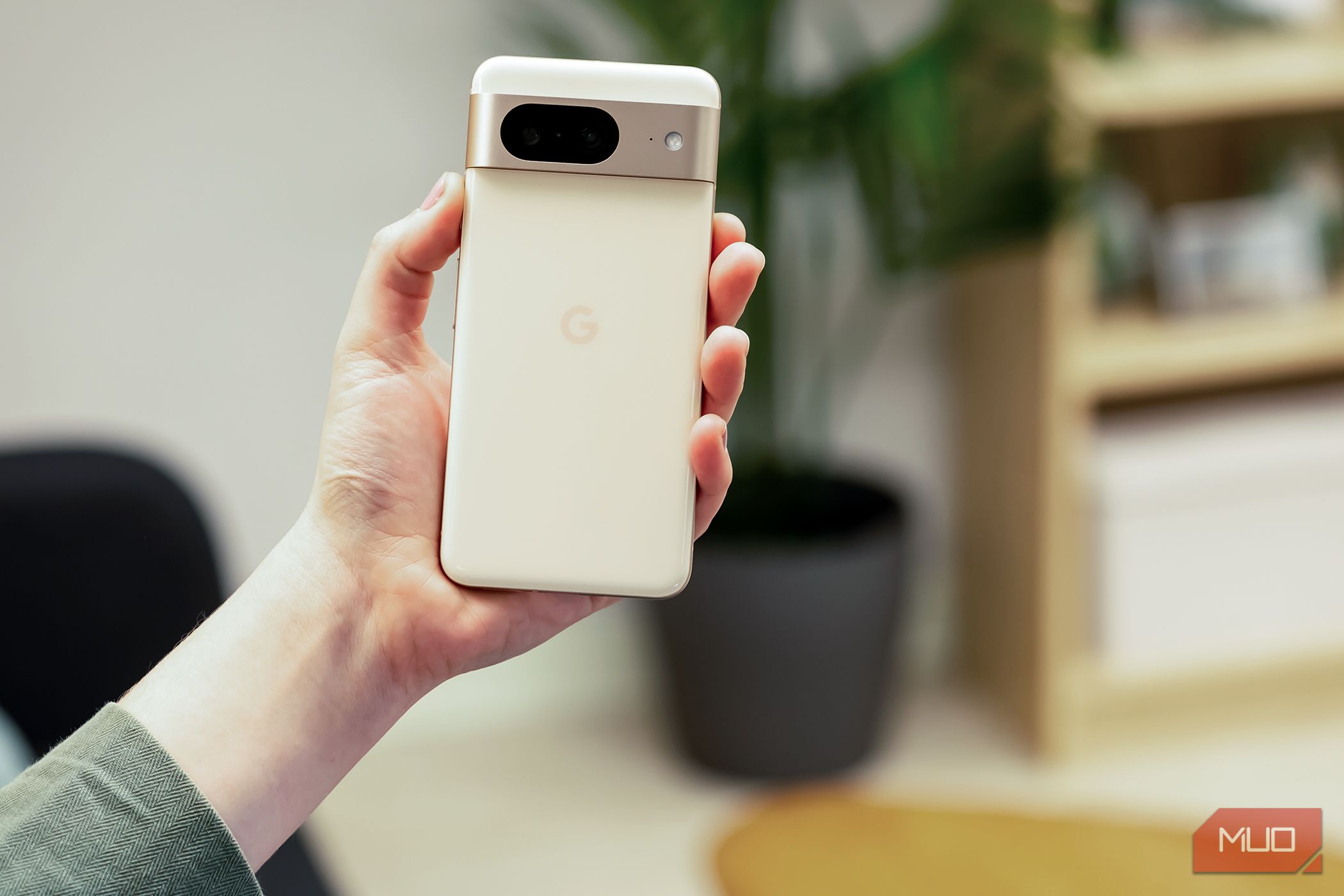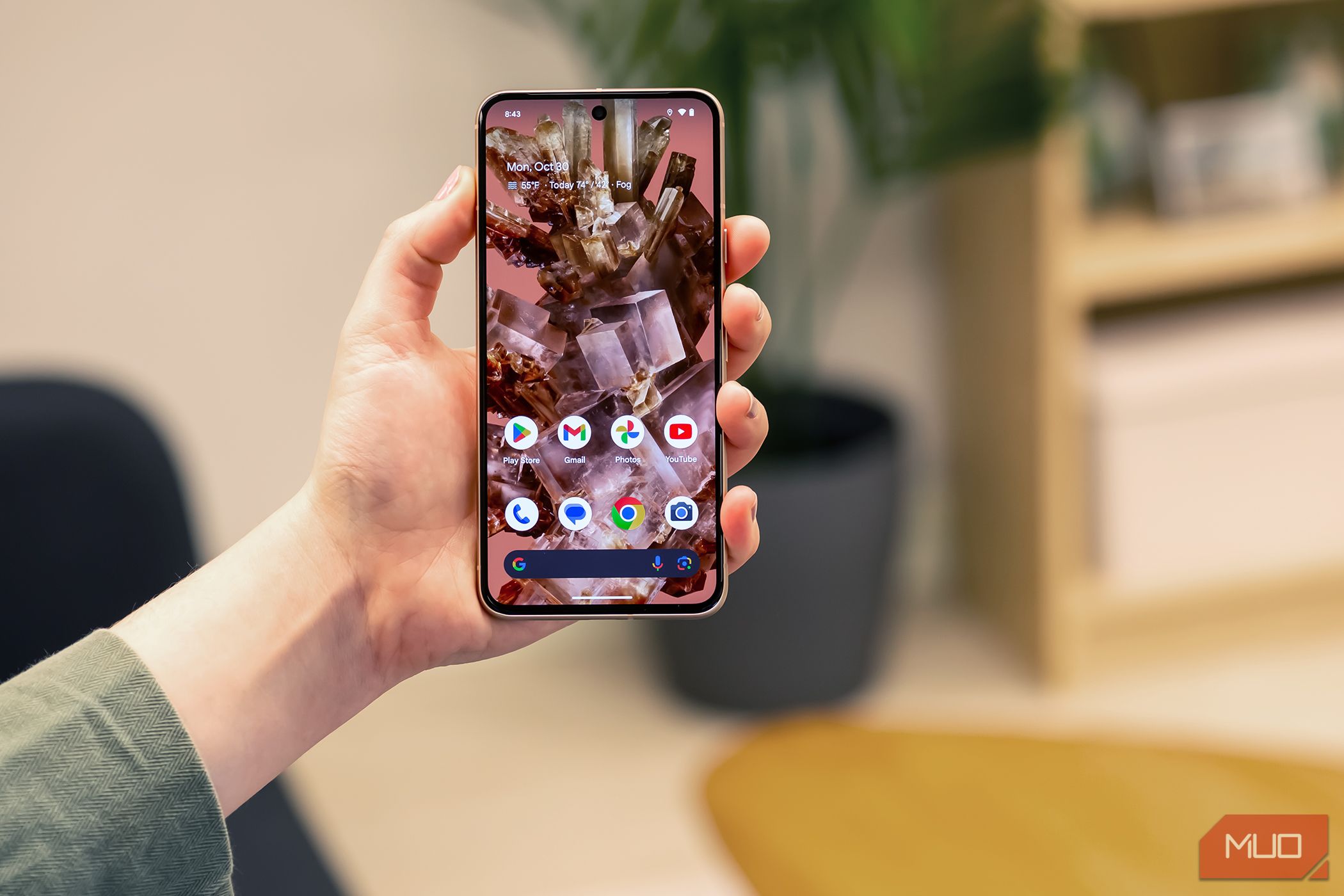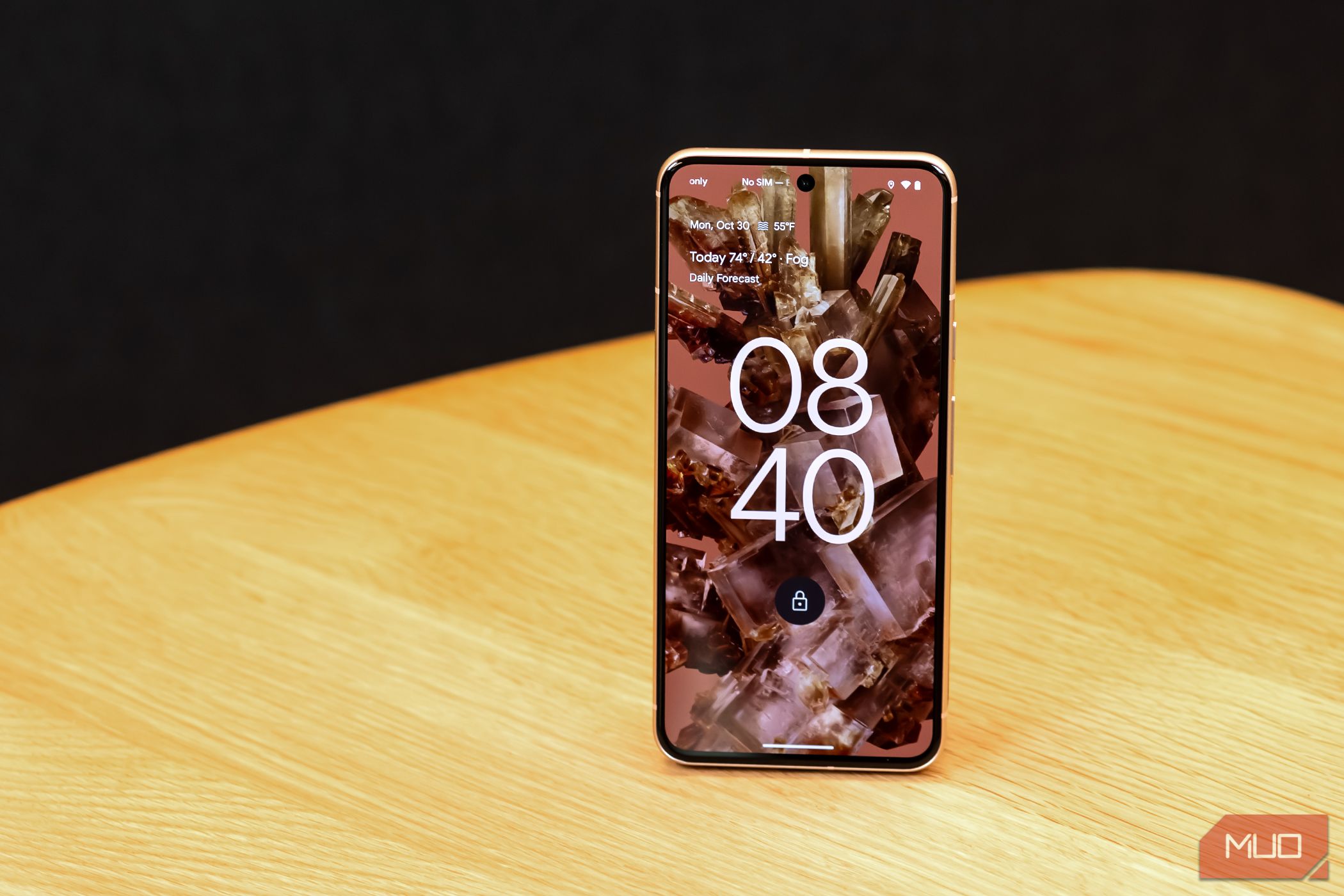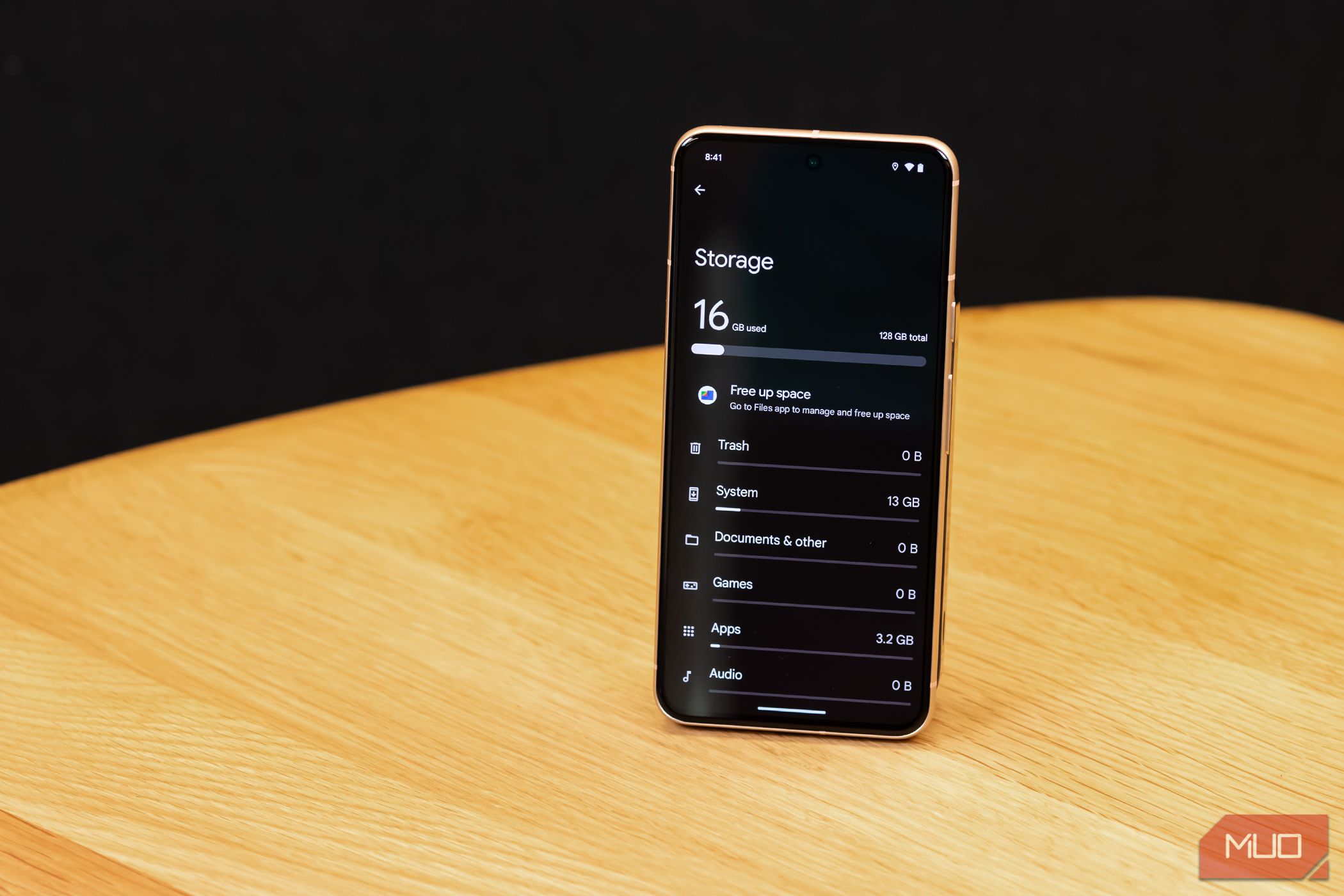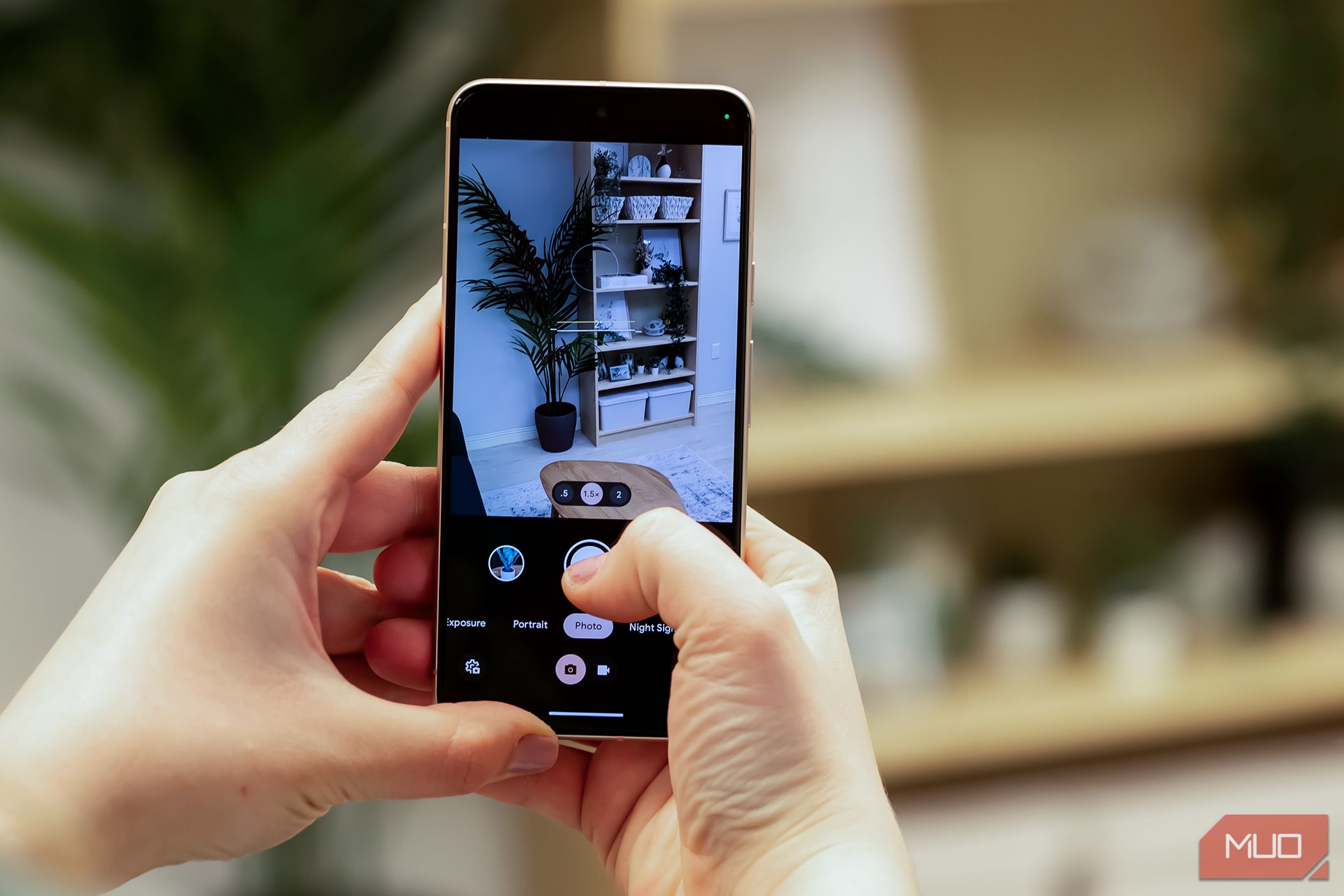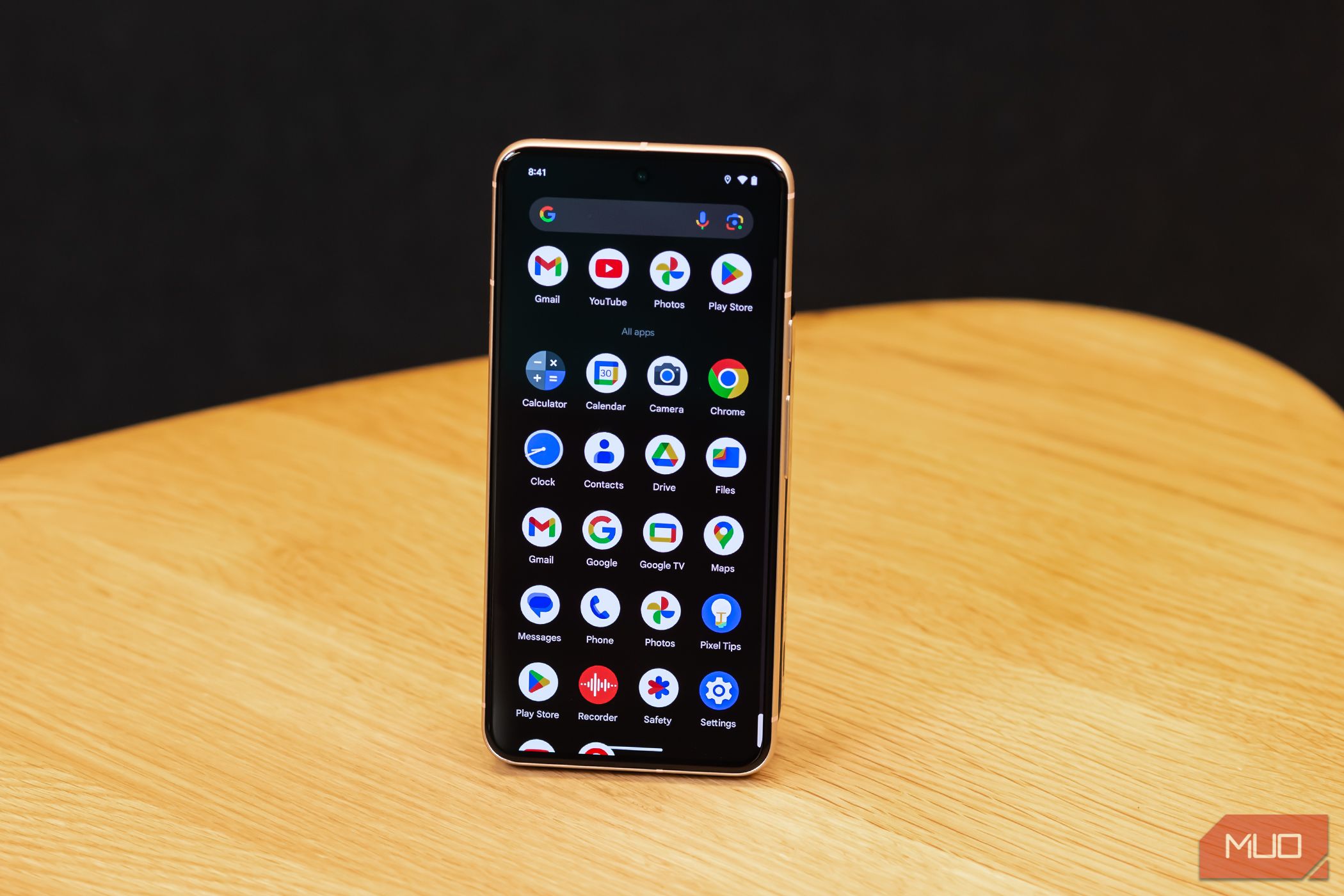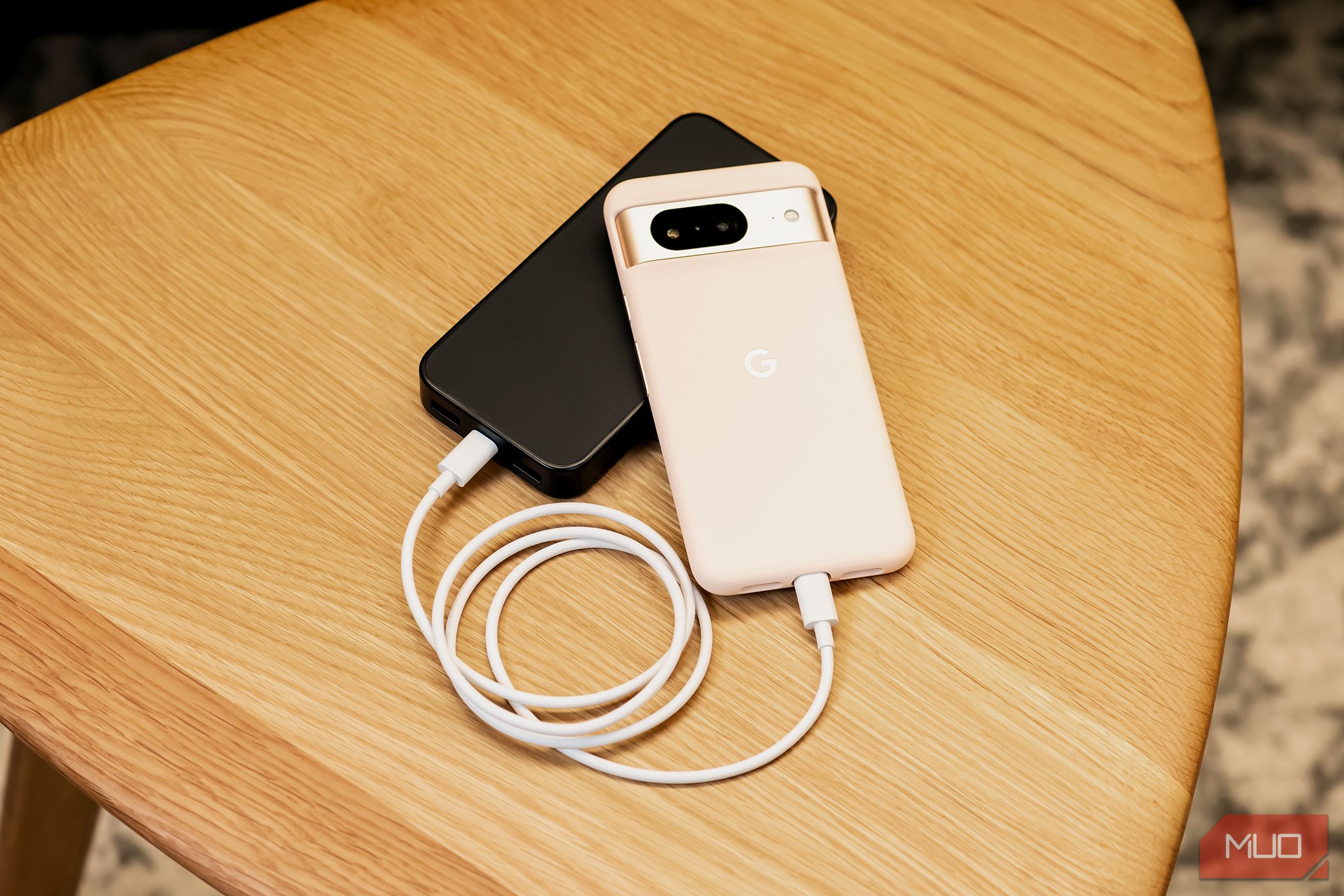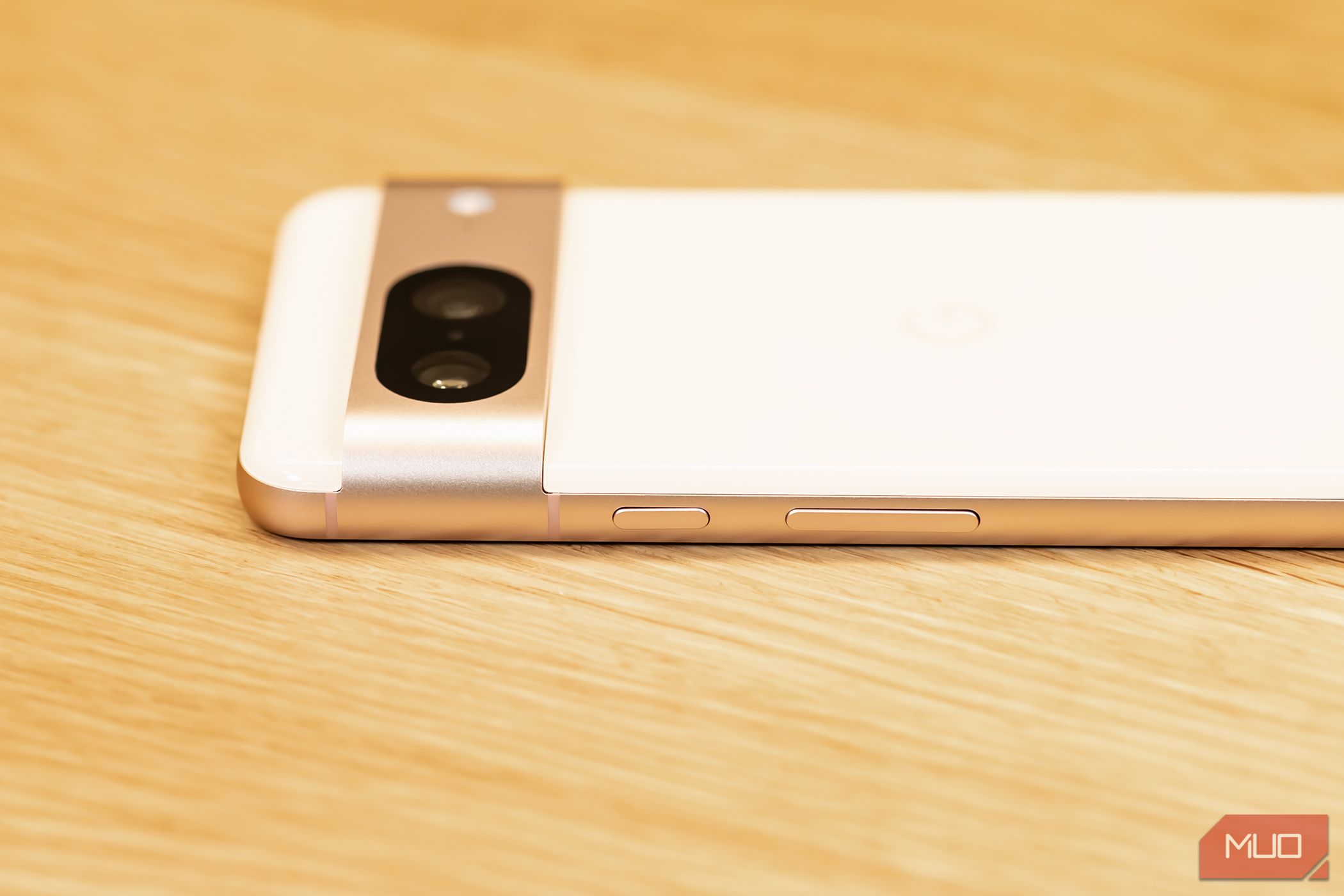Key Takeaways
- The Google Pixel 8 is a great phone and better for most people than its Pro companion due to its smaller size and comfortable design.
- The Pixel 8 features a bright display with a high refresh rate and upgraded speakers, offering a great audio-visual experience.
- The phone performs well with its custom Google Tensor G3 chip, providing speedy performance and impressive AI features, although it can warm up during intensive use. The camera quality is excellent but lacks manual controls, while the software includes useful AI editing.
Google, Apple, and other companies that use Pro in their product names are mainly at fault here, but it’s no surprise that the Pro version of a flagship phone gets all the attention. That said, non-Pro models can be a better buy than their Pro-branded companions, as evidenced by the Google Pixel 8.
While it leaves behind some of the flashier features on its Pro sibling—such as a telephoto lens and manual camera controls—the Pixel 8 is still a great phone and arguably better for most people.
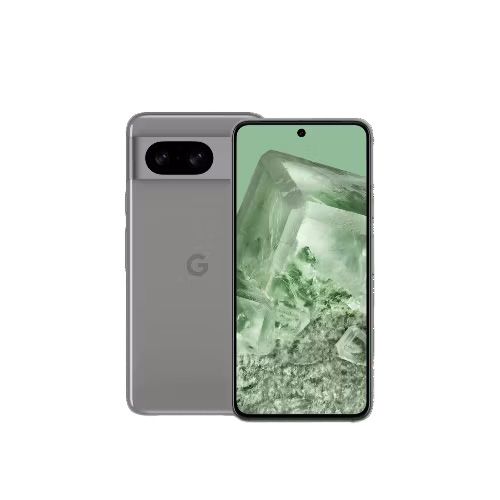

Google Pixel 8
The Google Pixel 8 may not have everything its Pro sibling does, but it's got a great size and feel, fantastic cameras, and some impressive AI-powered features that make this the best Pixel phone for most people.
- Brand
- SoC
- Google Tensor G3
- Display
- 6.2-inch OLED
- RAM
- 8GB LPDDR5X
- Storage
- 128GB, 256GB
- Battery
- 4575mAh
- Ports
- USB-C
- Operating System
- Android 14
- Front camera
- 10.5MP, f/2.2
- Rear camera
- 50MP, f/1.7, OIS (primary), 13MP, f/2.2, 126° FOV (ultrawide)
- Dimensions
- 150.5 × 70.8 × 8.9mm
- Colors
- 4G, 5G mmWave, Wi-Fi 7, Bluetooth 5.3
- Weight
- 187g
- Charge speed
- 27W wired, 18W wireless
- IP Rating
- IP68
- Micro SD card support
- No
- Speedy performance
- Solid battery life
- Great cameras
- Excellent AI image editing features
- 7 years of updates
- Gets warm under heavy use
- Missing manual camera features from the Pixel 8 Pro
Design: Is Smaller Better?
If you’ve seen Google’s last few phones, the Pixel 8 won’t surprise you. This is common in modern phone design—after all, why make a radical departure if people already like what you have. That said, here it’s especially interesting because while the Pixel 8 looks like the previous model, it feels quite different.
The Pixel 8 is ever-so-slightly smaller than the Pixel 7, with one of the easiest differences to spot being that this phone features a 6.2-inch display, unlike the 6.3-inch display on the previous model. It has been similarly scaled down in most other dimensions, making for a phone with one of the best screen size-to-comfort ratios I’ve seen in years.
Even compared to the iPhone 15, which is fairly similar in size, the Pixel 8 feels more usable with one hand. The phone measures just 8.9mm thick and weighs around 6.59oz (187g), featuring IP68 water and dust resistance. Specifications alone can’t speak to how good the phone feels to use, though.
Even the buttons, which rarely feel naturally placed on a modern smartphone, feel relatively well-placed and usable. More importantly, they aren’t placed in a manner that makes them easy to accidentally press, which is still annoyingly common on many phones. The main downside to the phone's design is the glass back, which feels like it’s just waiting to pick up a nasty, visible scratch.
A Bright Display and Upgraded Sound
As mentioned above, the screen on the Pixel 8 is ever so slightly smaller, measuring 6.2 inches rather than the 6.3 inches of the Pixel 7’s display. The Pixel 8 also features Corning’s Gorilla Glass Victus, helping to protect the screen in case of a drop.
While the Pixel 8’s screen may be somewhat smaller than the one found on the previous model, it uses the same 2400 × 1080 resolution, meaning it should look sharper. You get a variable refresh rate between 60 Hz and 120 Hz, and a peak brightness of 2,000 nits in standard dynamic range, or up to 1,400 nits in HDR.
That means that the Pixel 8 isn’t quite as bright as the Pixel 8 Pro, but it’s still plenty bright. I never had an issue seeing what was on the screen, even while using it outdoors in bright sunlight.
One aspect of the screen that isn’t a significant problem, but may still bother you, is the bezels. While they’re smaller than they were on this phone’s predecessor, they aren’t symmetrical. Specifically, the bezel at the bottom of the screen is larger than the rest.
The speakers are upgraded on the Pixel 8, offering better audio performance than the previous model. That said, the speakers offer uneven sound, with the lower speaker being louder. It’s also easy to accidentally block this speaker with your hand while using the phone.
Speedy Performance, But A Little Warm
As with the last few Pixel phones, the Pixel 8 uses a custom chip—in this case, the Google Tensor G3. You can get the phone in 128GB or 256GB storage options, but regardless of the capacity you opt for, it ships with 8GB of LPDDR5X RAM.
The G3 processor feels speedy in daily use, but as with many modern phones, once it’s fast enough, the overall speed doesn’t matter much. It's only when you start running games or using more intensive software, that performance counts, and the G3 remains fast in this use case. Still, the more impressive aspect here is the AI features, which we’ll look at later.
Previous Tensor chipsets were known for their tendency to warm up over time. While this isn’t as much of an issue with the Tensor G3 as with previous models, it can still warm up. Fortunately, it’s far less of an issue here. You’re more likely to experience this heat when gaming or using more intensive apps like benchmarks, but it never gets unreasonably hot as other models could. A bad mobile connection can also cause the chipset to overheat as the phone struggles to connect.
The good news is that even when the phone got on the warm side, it never engaged any throttling—at least that I noticed during testing. It’s nice to know that the phone won’t suddenly slow down at a key moment.
Great Cameras, But No Manual Control
For some time now, Google’s Pixel series has been renowned for its camera quality. Granted, the bulk of the praise has been saved for the Pro series phones, but it’s easy to forget how much is the same from phone to phone. This year, the similarity is obvious, and the most significant difference between the two phones is a slightly confusing disappointment.
Looking at the hardware, the main camera is the same as you’ll find on the Pixel 8 Pro: a 50-megapixel lens, with an f/1.68 aperture, which features both optical image stabilization (OIS) and electronic image stabilization (EIS). The wide-angle lens is a 12-megapixel sensor with a 125.8-degree field of view, while the selfie lens is a fixed-focus unit with a 10.5-megapixel resolution.
The main difference you’ll find between the Pixel 8 and the Pixel 8 Pro is that this model doesn’t feature a telephoto lens, which the Pro does. How much this matters will depend on the types of photos you take, but while phone cameras are getting better than ever, telephoto-range photos are still somewhere they suffer even with a dedicated lens. With that in mind, I wouldn’t consider it a significant downside if I were considering this phone based on the cameras.
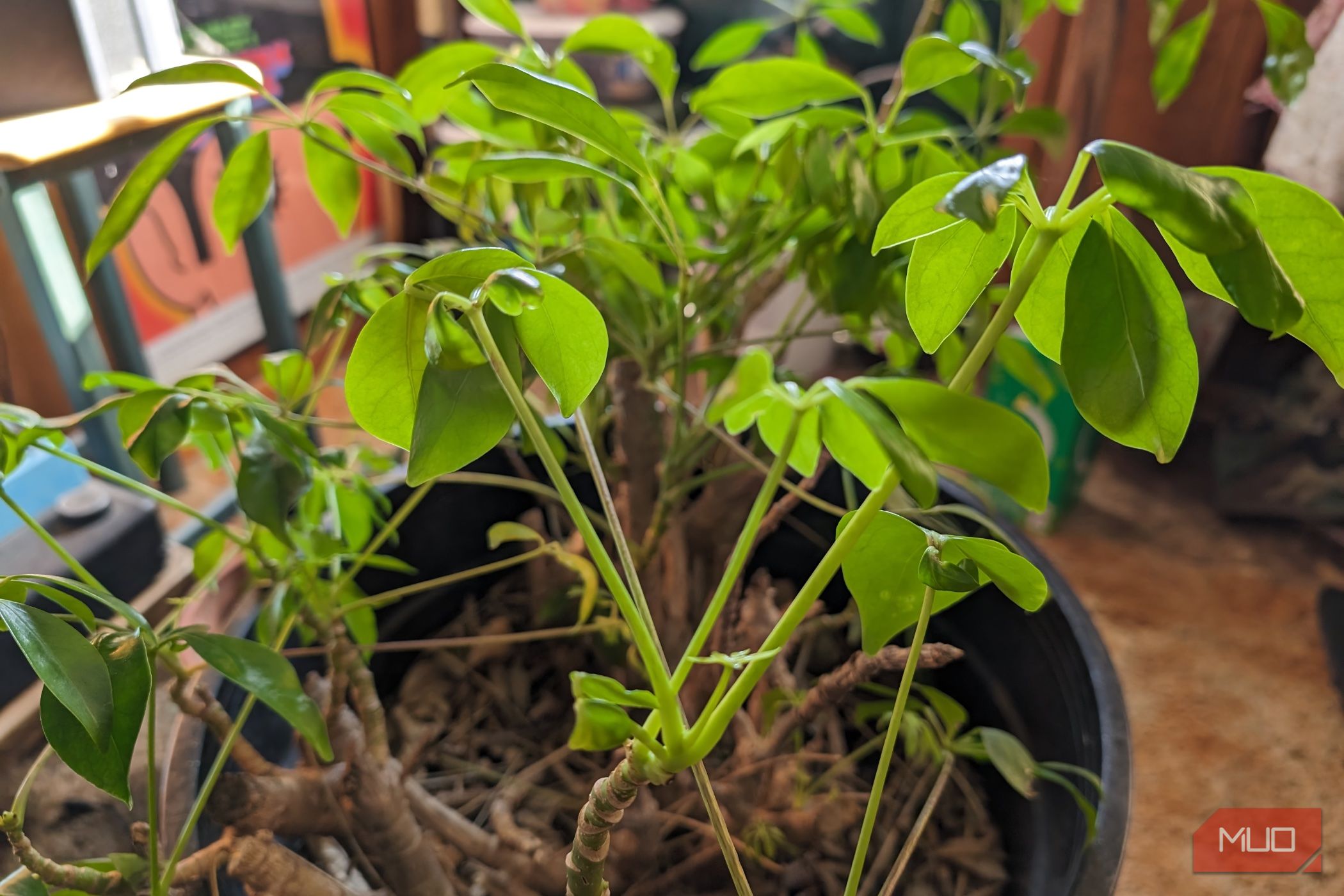
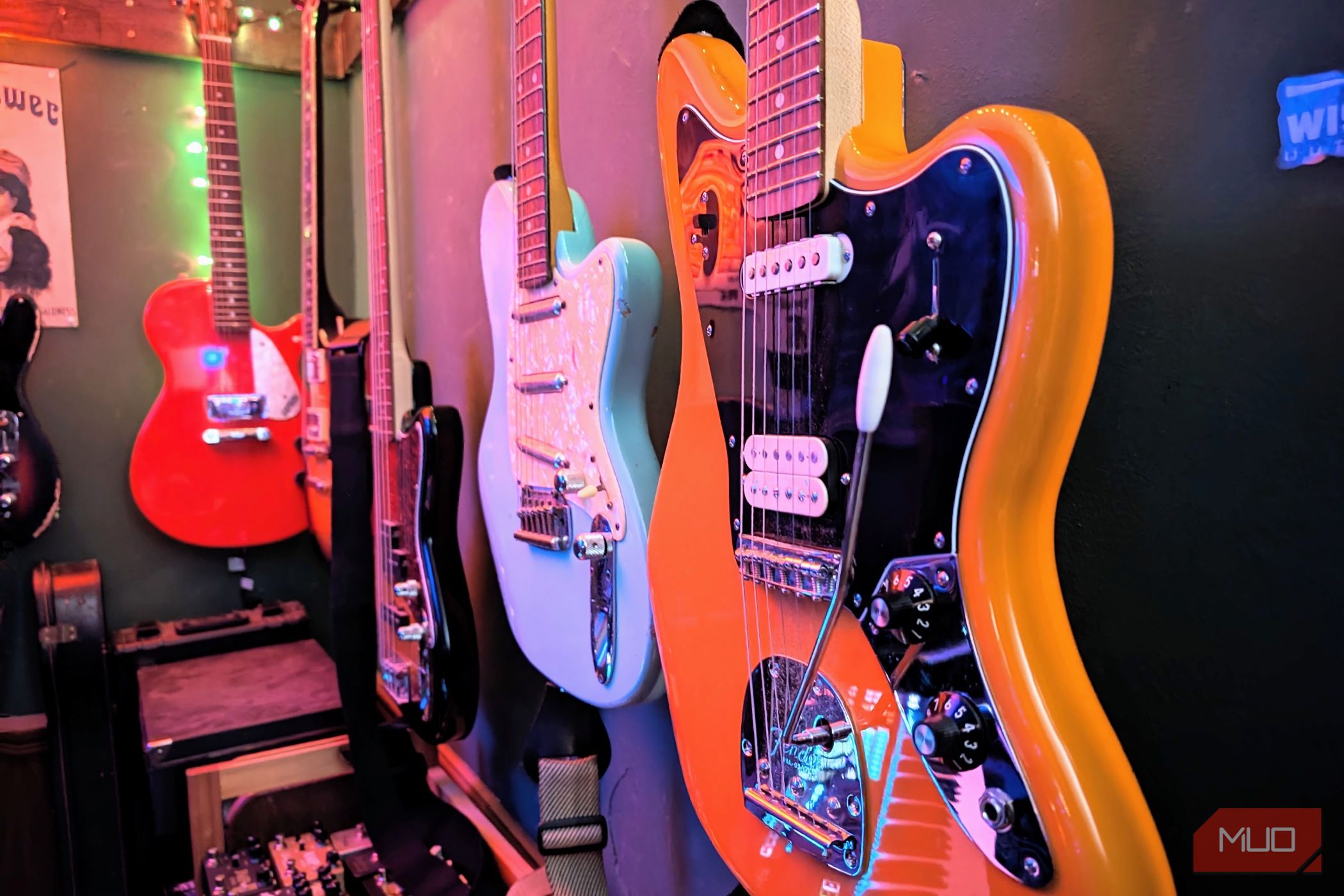

In general, the photos are as good as you’d expect from a good quality smartphone camera—plus a bit of that extra post-processing magic you can expect from a Google phone. With a bit of help from various AI-based features, the camera can easily produce some stunning photos.
My least favorite aspect of the cameras in the Pixel is the lack of manual camera controls you’d find on the equivalent Pro model. While the iPhone 15 Pro also has additional camera features you won’t find on the base model, you do get the same manual controls on each. This is likely a software feature in the Pixel 8’s camera app—not hardware dependent—so it’s a shame to not see it here.
Software: Brilliant AI and Updates for Years
Out of the box, the Pixel 8 runs Android 14, but the good news is you can expect plenty of updates. While other manufacturers offer up to five years of support and update, Google offers up to seven years of OS and security updates. This is impressive, though whether you’ll still be using the phone in that many years is another question.
If you’ve used Android 13, you’ll find that Android 14 looks and feels fairly familiar, albeit with some useful new features. The good news is that Android 13 looked and felt great, especially stock Android, so the similarity isn’t one you should mind. Assuming you’re not a fan of the stock look and feel, the customization that Android phones are known for is still present here.
While the usual Android features are fine, some notable Pixel-only additions from Google make the Pixel 8 feel truly special. We’ve already looked at the camera, but the hardware isn’t the key feature here. Instead, it's the Magic Editor, which gives you much more control over your photos after you’ve snapped them.
Like Magic Eraser before it, Magic Editor uses Google’s cloud-based AI to make impressive changes to your photos. The Magic Eraser is still present, now it can completely erase the background instead of blurring it. This means the Magic Editor can make more impressive changes, like changing a gray sky to a vivid blue. It doesn’t always work perfectly, but usually, it only takes a few tries to get it right.


Magic Editor doesn’t always make the changes you’d hope for—it won’t adjust the color grading of the rest of an image when you change the sky, for example. With Google’s promised updates, it could get even better or gain features over time.
Another smart feature of the Pixel 8’s camera suit is Best Take. This lets you use parts of another image to fix an aspect of a nearly great photo. For example, if someone sneezes during a shot, you can replace that portion of the image with one from another shot, making for a perfect take.
Other features have seen valuable updates, too. The voice controls now wait for you to finish speaking, letting you use them more naturally. The biometric face unlock is more useful as well, having been updated to support Class 3, meaning you can use it for financial apps in addition to simply unlocking your phone.
Battery: Leave the Charger At Home
Looking at the specs, the 4,575mAh battery found in the Pixel 8 doesn’t inspire much confidence, particularly because the battery life in the Pixel 7 series was far from spectacular. Fortunately, a combination of a smaller screen and likely some software optimizations mean that battery life is not only better here than 7-series Pixel phones, but likely better than the current Pro model as well.
The smaller screen, while not without its downsides, means that the phone uses battery at a slower rate. This can make for improved battery life in the proper circumstances. On the other hand, if you live in an area with a perpetually weak signal, the battery will drain much faster.
Charging is plenty quick, although, in an increasingly common trend, the Pixel 8 doesn’t ship with a charger. This means it’s up to you to source one. But with the right charger, you can get up to 50 percent charge in roughly 30 minutes. That will require a USB-PD 3.0 PPS charger with at least 30 watts of power, but it’s nice to know it’s available.
If you prefer not to plug in to charge, the Pixel 8 also features Qi wireless charging, but not the newer Qi2 standard.
Price and Availability
Regardless of the storage configuration you opt for, the Google Pixel 7 features the same Google Tensor G3 SoG and 8GB of LPDDR5X RAM. Your only choice is between the base model, which offers 128GB of onboard storage for $699, or 256GB for $799. These are retail prices, but generally, you can expect a roughly $100 difference between the two models.
The Pixel 8 is available in three color options: Rose (which we’re looking at in this review), Obsidian, and Hazel. These three options are all somewhat muted, though, with even the Rose option looking like a shade of beige rather than anything related to gold.
As for alternatives, the closest are always Samsung’s latest flagships—but it feels more apt to compare the Pixel 8 to the iPhone 15. Both are non-Pro options that feel like a much easier recommendation than their higher-profile siblings, though Apple’s take on the formula is pricier.
Should You Buy the Google Pixel 8?
The Google Pixel 8 is a fantastic phone, even if the price has increased slightly. The cameras are top-notch, but it’s the overall feel of the phone that is the most significant upgrade here, making for one of the best compact phones of the past few years.
If you rely on or plan to heavily use some of the features of the Pixel 8 Pro, like the manual camera controls or the brighter screen, that phone may be a better buy. That said, the Pixel 8 is the better best for most people.


Google Pixel 8
The Google Pixel 8 may not have everything its Pro sibling does, but it's got a great size and feel, fantastic cameras, and some impressive AI-powered features that make this the best Pixel phone for most people.

